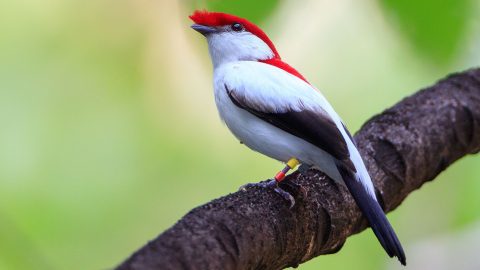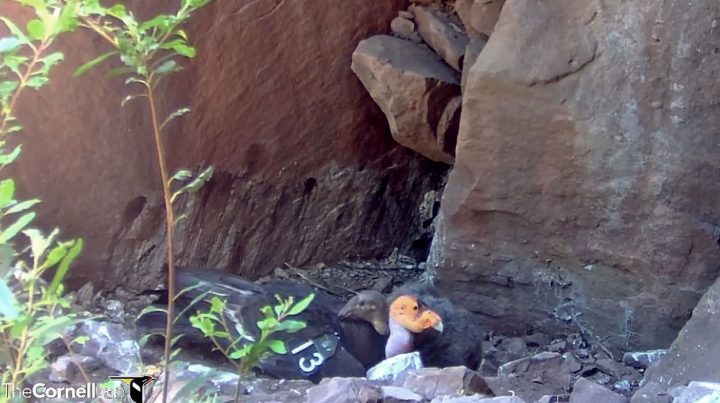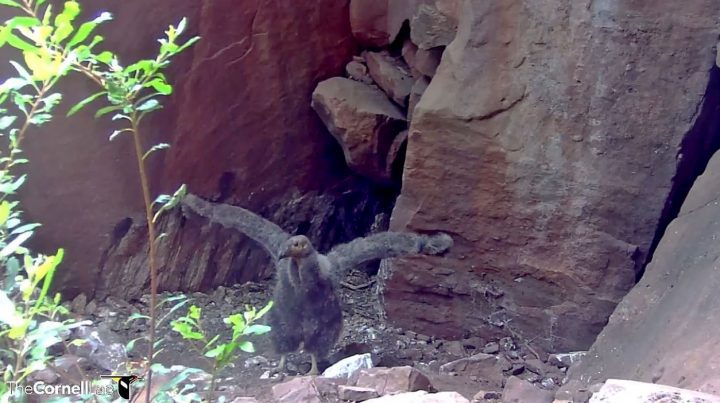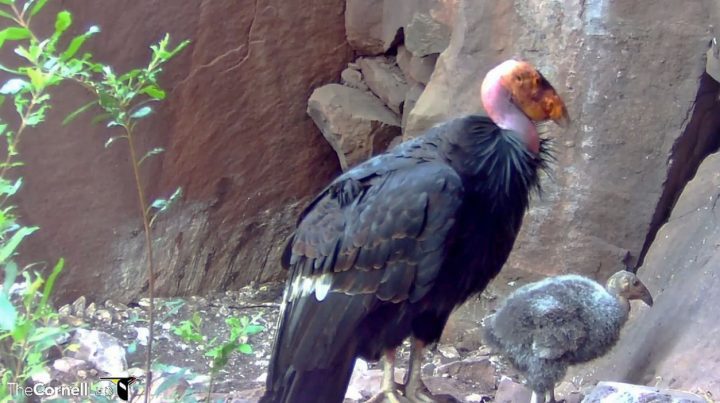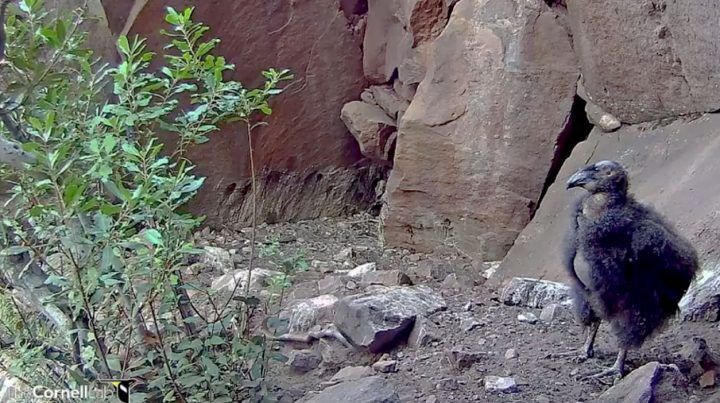Bird Cams’ California Condor Chick Survives the 2017 Wildfires
By Marc Devokaitis
April 2, 2018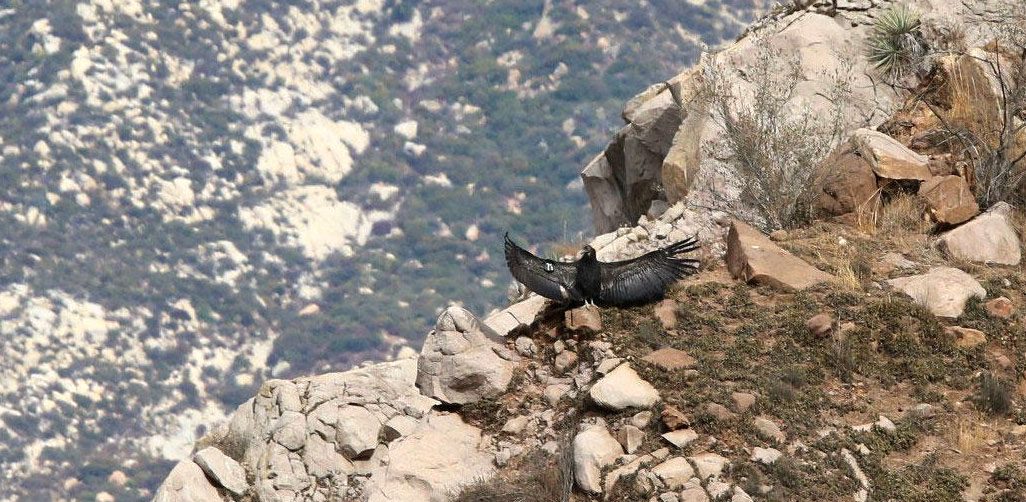
From the Spring 2018 issue of Living Bird magazine. Subscribe now.
What does a California Condor nestling do when its home base is threatened by fire? For one young bird, the fire may have been the motivation to fledge.
The Thomas Fire, the largest of several wildfires that raged through Southern California last December and January, burned approximately 440 square miles and more than 1,000 structures as it ran from the coastal towns of Santa Barbara and Ventura deep into the rocky hills of Los Padres National Forest. Los Padres is home to the Sespe Condor Sanctuary, site of a boulder-strewn pass known as Devils Gate—and an online Bird Cam hosted by the U.S. Fish and Wildlife Service and Cornell Lab of Ornithology that has provided thousands of web viewers with a window into a wild California Condor nest.
In mid-December, the Thomas fire was creeping ever closer to the nest at Devils Gate, where this year’s chick, #871, was close to fledging. But due to issues with weather and the solar-powered equipment at the remote nest site, the camera was offline. Biologists Nadya Seal Faith and Joseph Brandt of the Condor Recovery Team had been checking in on the condor chick at the nest, but they had to suspend their monitoring forays because of the impending inferno. Luckily, both #871 and her parents were fitted with transmitters that gave the researchers some clues about the family’s whereabouts, and the signs were encouraging.

California Condor chick #871 with its father (left), at about 7 weeks old. The chick hatched April 11, 2017. Photos are from the Cornell Lab Bird Cams project. 
California Condor chick #871 is a female. Here, she is about 7 weeks old and is pictured with her father. Both male and female parents bring food to the nest. 
#871 shares a quiet moment with her mother in June 2017. 
At 2 months old, #871 stretches her wings. One day they may span over nine feet and fly up to 40 miles per hour. 
Chick #871 may be less than 2 months old in this photo, but she already has a profile similar to her father's. 
When chick #871 was about 4 months old, biologists gave her a full checkup, tested her for lead, and attached her numbered tag and radio transmitter.
On December 27, a team of biologists were given the go-ahead to hike the trails on the unburned east side of the Sespe River, across the canyon from the nest. They detected faint signals from #871’s transmitter over the next two days, but they did not see the bird. Finally, on January 2, Seal Faith and Brandt hiked into the nest area to assess the site and quickly spotted two condors that they identified as #871’s parents. After climbing to a higher vantage point, Seal Faith saw #871 for the first time since the bird had left the nest. Perched on a ledge on the unburned side of the canyon, the condor looked to be in good shape, despite some singed wingtips on its tattered feathers.
Seal Faith speculates that #871’s feathers might have burned from being close to scorching-hot rocks while climbing out of its nest cavern in a close escape, but she said the damage shouldn’t hinder its ability to fly. The Condor Cam online community was elated about the happy ending, with one cam watcher sharing her feelings in the online comment thread: “I am crying tears of joy and I am ecstatic that she is doing amazing and flying free!”

All About Birds
is a free resource
Available for everyone,
funded by donors like you
American Kestrel by Blair Dudeck / Macaulay Library
